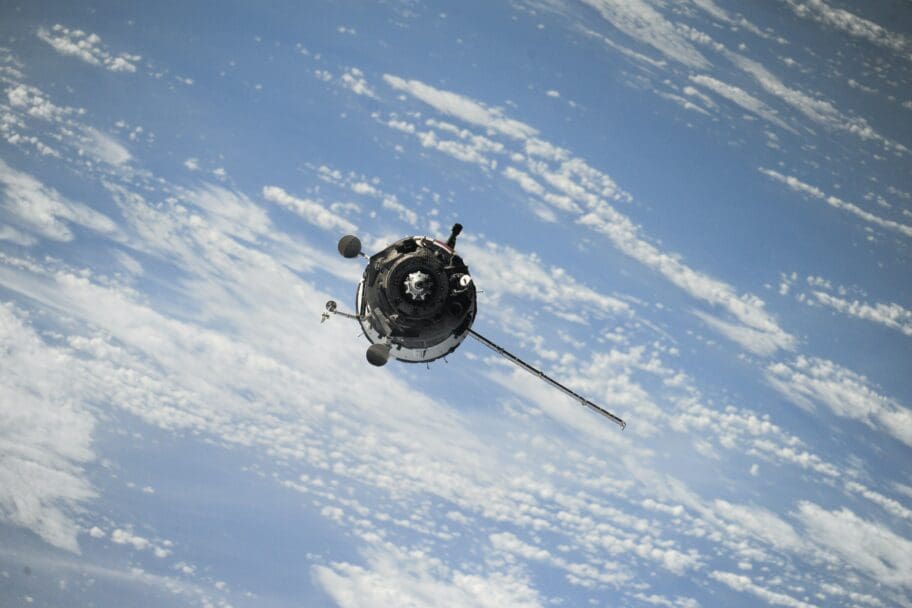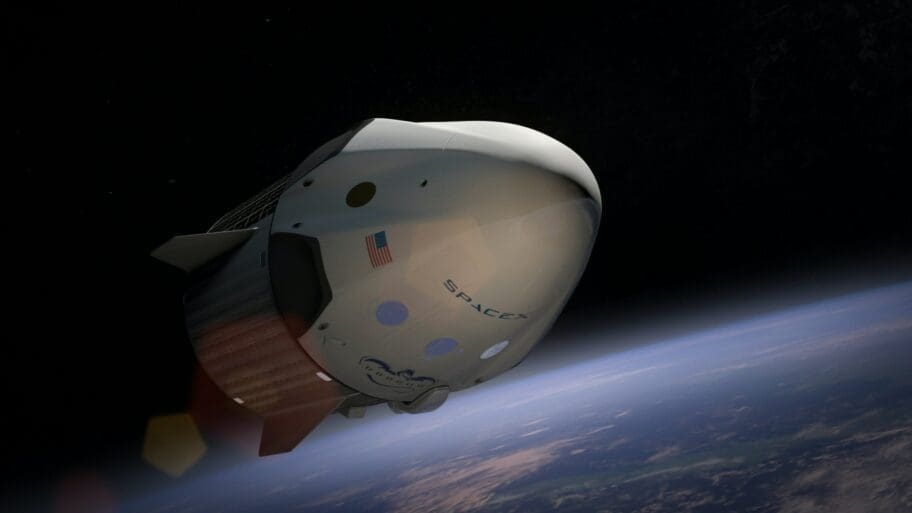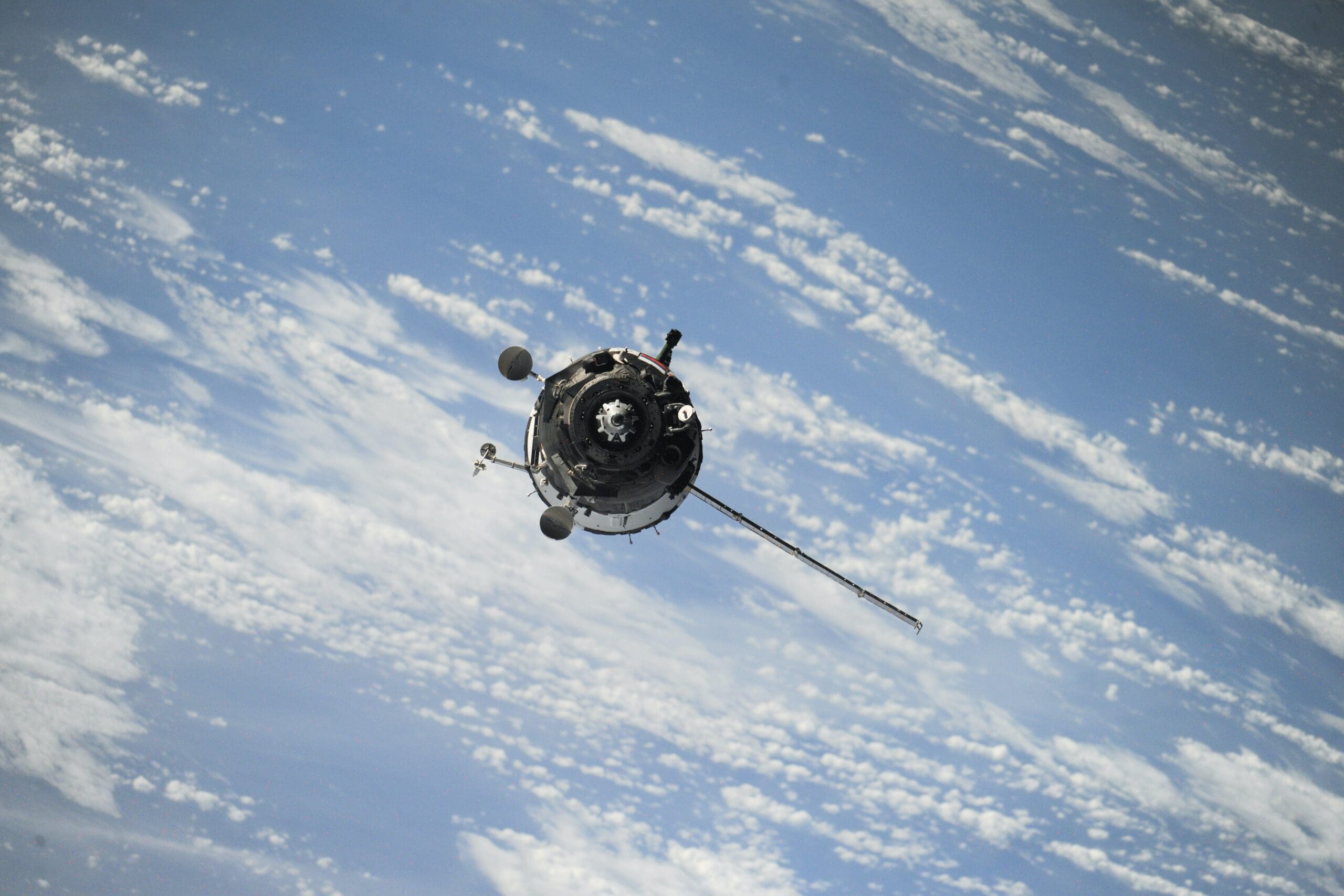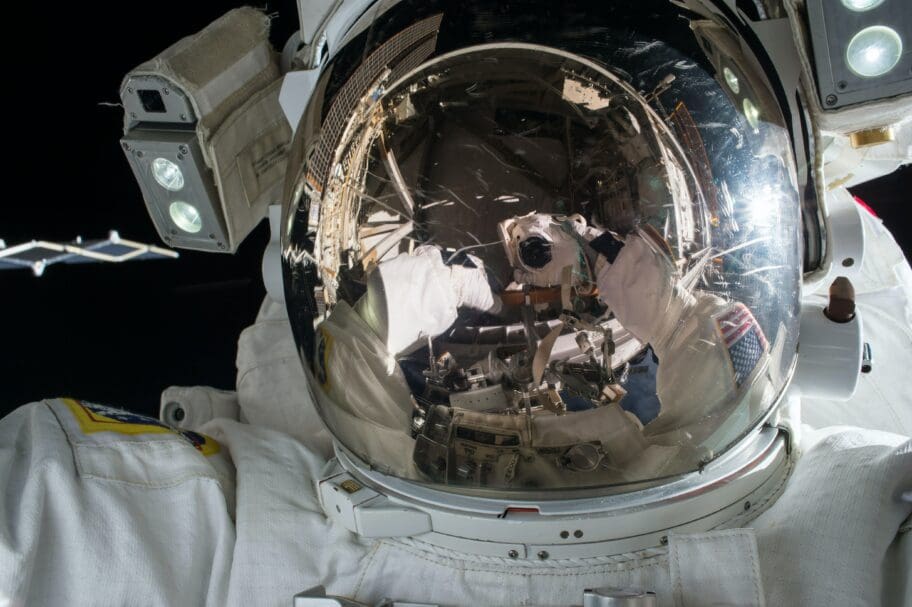Ever wondered how we can push the boundaries of interstellar travel and spacecraft navigation further? Consider the influence of spacecraft design and Mars rovers in space exploration. One word: AI. The intersection of artificial intelligence, spacecraft navigation, and robotic systems is revolutionizing our approach to interstellar travel and mars rovers in deep space missions. You see, the growing influence of advanced algorithms and robotic systems on spacecraft design isn't just about making things easier - it's about enabling us to achieve interstellar travel objectives that were once considered impossible.
AI, through advanced algorithms, plays a crucial role in enhancing robotic systems for space applications, interstellar travel infrastructure, and life support systems. Space probes and planetary rovers help researchers analyze vast amounts of deep space data. They plan missions to the international space station more effectively, ensuring overall mission success even in alien environments. Yet, like all game-changers, planetary rovers play a crucial role in environments like deep space, presenting its own set of challenges too.

As we stand on the cusp of a new era in AI in space exploration, let's delve into the exciting frontier of planetary rovers, their applications, environments, and analysis together. In future posts, we'll delve into the potential benefits and challenges of environments for space applications, including deep space and planetary rovers.
AI Applications in Robotic Spacecraft Design
Autonomous Operations
AI and ML technology are revolutionizing the design of rovers and their applications in different environments, transforming how we operate spacecraft. One of the most significant applications of ml and ai algorithms is in autonomous spacecraft operations within various environments. AI systems are now capable of handling complex tasks in space applications that would previously require human intervention, even during space weather events. For instance, they can:
- Monitor and adjust onboard systems in real-time.
- Execute pre-programmed mission objectives without human input.
- Respond to unexpected events or anomalies autonomously.
These space applications utilizing AI algorithms not only increase efficiency in predicting space weather events but also reduce the need for constant human monitoring, thus reducing operational costs.
Moreover, autonomous operations mitigate risks associated with human error. Even the most experienced operators can make mistakes due to fatigue or stress. AI algorithms, on the other hand, consistently perform at high levels regardless of external factors.
Enhancing Durability
Another major application of AI in spacecraft design involves enhancing durability through machine learning algorithms. These algorithms analyze historical data from past missions to predict potential issues and suggest preventive measures. This approach leads to more robust spacecraft designs that can withstand harsh space environments for extended periods.
For example, machine learning algorithms may identify patterns indicating a particular component's likelihood to fail under certain conditions. Armed with this information, engineers can modify the design or construction process to improve this component's resilience.
Efficiency and Cost-effectiveness
Spacecraft design has always been a balance between performance and cost-effectiveness. With the advent of AI technology, achieving this balance has become easier than ever before.
By using AI systems during the design phase, engineers can optimize various aspects like weight distribution, fuel consumption, payload capacity etc., leading to more efficient designs. Robotic construction methods powered by AI can significantly reduce manufacturing time and costs.
For instance:
- Advanced simulation tools powered by AI can test thousands of different design configurations in a short period.
- Robotic assembly lines guided by AI can assemble components faster and with greater precision than humans.
- Machine learning algorithms can monitor production processes in real-time to identify inefficiencies and suggest improvements.
Intelligent Navigation Systems: AI's Contribution
Self-Navigating Spacecrafts
Artificial intelligence (AI) serves as the brain behind intelligent navigation systems in space exploration. Imagine a spacecraft, akin to an autonomous vehicle, navigating the vast expanse of space, making crucial decisions independently. The development of self-navigating spacecraft using AI has revolutionized space travel.
- Advanced algorithms and deep learning techniques enable these robotic systems to process vast amounts of data quickly.
- With machine learning and neural networks, they can learn from past experiences and improve their decision-making capabilities over time.
- They can adapt to unforeseen circumstances without human intervention, reducing the risk of human error.
The use of artificial intelligence in these autonomous navigation systems allows for more efficient and safer missions.
Path Planning and Obstacle Avoidance
One significant contribution of AI is its ability to enhance accuracy in path planning and obstacle avoidance:
- Using advanced image recognition technology, intelligent navigation systems can identify potential hazards.
- Neural network algorithms allow them to predict trajectories and plan optimal routes around obstacles.
- Real-time adjustments are made possible through machine learning techniques.
This technology not only ensures the safety of our spacecraft but also increases the success rate of our space missions.
Machine Learning: Enabling Real-Time Decisions
Machine learning plays a pivotal role in enabling real-time decision-making capabilities:
- It allows for rapid processing and analysis of data collected by sensors onboard the spacecraft.
- By recognizing patterns in this data, it enables the system to make accurate predictions about future events or conditions.
- This predictive capability facilitates proactive decision-making that enhances mission efficiency and safety.
With each successful mission, these intelligent navigation systems continue learning and improving – a testament to the power of machine learning in space exploration.
Enhanced Mission Longevity
Intelligent resource management is another game-changer brought about by AI:
- AI-powered life support systems ensure optimal consumption of resources like oxygen, water, and energy aboard the spacecraft.
- Intelligent navigation system minimizes fuel consumption by identifying efficient flight paths.
- Predictive maintenance enabled by machine learning helps prevent breakdowns before they occur.
By optimizing resource usage, artificial intelligence significantly enhances mission longevity – a crucial factor given the cost implications associated with space travel.
AI-Powered Satellite Data Processing
Deep Learning and Satellite Imagery
Harnessing the power of artificial intelligence (AI) in space exploration has opened up new vistas for satellite data processing. One of the most compelling developments is how deep learning techniques have expedited data analysis from satellite imagery. These techniques, which mimic human brain processes, can process image data from satellites at lightning speed, delivering insights faster than traditional methods.
For instance, consider a scenario where a large volume of satellite imagery needs to be analyzed quickly. Instead of relying on manual interpretation or less sophisticated algorithms, AI-driven tools can sift through this big data in no time. They identify patterns and extract relevant information with remarkable accuracy. This rapid turnaround not only saves time but also enables more immediate responses to unfolding situations.
Moreover, these advanced technologies are not just about speed; they also improve the quality of satellite imagery interpretation. By training neural networks with vast amounts of labeled image data, AI systems learn to recognize intricate details that might elude human observers or conventional computer programs.
Predictive Modeling for Weather Forecasting
Another exciting application lies in predictive modeling for weather forecasting based on satellite data insights. With an array of satellites orbiting Earth constantly collecting sensor data on atmospheric conditions, there's a wealth of information waiting to be mined.
AI algorithms excel at finding patterns within this massive dataset that humans or standard statistical models might miss. For example, by analyzing past weather patterns in conjunction with real-time satellite observations, AI can forecast future conditions with unprecedented precision.
This kind of predictive modeling isn't just beneficial for your local weather report—it's crucial for operations such as disaster management and agricultural planning as well. And it's not only about predicting rain or shine; AI-powered systems can anticipate extreme events like hurricanes or droughts days or even weeks ahead.
Automated Detection and Earth Observations
In addition to speeding up analysis and enhancing prediction capabilities, AI plays a pivotal role in automated detection of anomalies or changes in environmental patterns. Satellites equipped with advanced image recognition technologies offer detailed Earth observations that are invaluable for monitoring our planet’s health.
Take the Kepler telescope as an example: it utilizes autonomous operations to detect subtle changes in starlight that suggest planetary transits—something exceedingly difficult for human astronomers due to the sheer amount of observational data involved.
On a more terrestrial level, similar principles apply when monitoring environmental changes here on Earth—be it deforestation rates in the Amazon Rainforest or ice melt levels in the Arctic Circle. The ability to automatically detect anomalies allows us to respond swiftly and decisively when abnormal patterns emerge—a key asset given today’s pressing climate concerns.
To sum up:
- Deep learning techniques streamline the process of interpreting satellite imagery
- Predictive modeling based on satellite data enhances weather forecasting abilities
- Automated detection systems monitor environmental changes effectively
The integration of AI into space exploration marks a significant leap forward—not just for scientific discovery but also for our understanding and stewardship of our home planet.
Tracking Space Debris with AI Technology
Machine Learning for Accurate Tracking
The immense volume of space debris orbiting our planet presents a significant challenge. This waste poses a threat to spacecraft navigation, including the International Space Station. To tackle this issue, researchers are leveraging machine learning technology.
Machine learning offers an accurate tracking and prediction system for space debris paths. By analyzing past data, these algorithms can predict future trajectories with impressive accuracy. For instance, if a piece of debris has followed a particular path in the past during specific space weather events, machine learning can use this information to predict where it might move next.
This application of AI is particularly beneficial in long duration missions where real-time human monitoring isn't feasible. Machine learning systems can continuously analyze data and adjust predictions as new information becomes available.
Real-Time Monitoring Systems
AI-powered real-time monitoring systems play a crucial role in mitigating collision risks in space. These systems utilize advanced AI algorithms that rapidly process vast amounts of data from various sources.
For example, sensors on satellites collect data about nearby objects' positions and velocities. The AI system then processes this data in real-time to determine if there's any risk of collision. If so, it can recommend evasive maneuvers to avoid potential disasters.
These monitoring systems also help manage the increasing problem of space junk by providing timely detection and tracking of new debris pieces entering Earth's orbit.
Neural Networks for Identification and Classification
Neural networks offer another promising solution for managing space debris. These sophisticated AI models excel at identifying patterns within large datasets – perfect for classifying different types of space junk.
A neural network trained on images and sensor readings from various types of debris could identify an unknown object based on its characteristics such as size, shape or material composition. This classification ability is crucial not only for tracking purposes but also developing sustainable solutions to manage the growing problem of space waste.
To illustrate:
- A neural network might classify small fragments resulting from satellite collisions.
- It could identify spent rocket stages left behind after launches.
- It might detect defunct satellites no longer operational but still floating around in orbit.

Assistive AI Technologies for Astronauts
Smart Wearables and Predictive Analytics
Astronaut safety is paramount in space exploration. With the integration of smart wearables and predictive analytics tools, astronauts can now have a safer experience during missions. These wearable devices are designed to monitor vital signs such as heart rate, blood pressure, and body temperature in real-time. They use machine learning techniques to analyze collected data and predict potential health risks before they occur.
For example, if an astronaut's heart rate begins to elevate beyond normal levels, the predictive analytics tool could alert both the astronaut and ground control. The immediate response could potentially save lives or prevent serious injuries. This technology not only enhances safety measures but also provides peace of mind for human crews venturing into the unknown.
Moreover, these wearables can be customized according to individual needs. Some may include additional features like radiation detectors or oxygen level indicators which further ensure astronaut well-being.
Natural Language Processing for Communication
Communication between astronauts and ground control is crucial during space missions. Natural language processing (NLP) techniques make this communication more efficient by translating spoken words into text or vice versa. For instance, astronauts aboard autonomous spacecraft or mars rovers can relay complex instructions to ground control using NLP integrated systems.
These systems help eliminate misunderstandings that might arise from traditional communication methods. They also free up time for astronauts to focus on critical tasks instead of spending it on lengthy communications.
Health Monitoring Systems
Personalized health monitoring systems powered by machine learning algorithms are becoming increasingly important in space exploration. These systems track an astronaut's physical condition throughout their mission, providing valuable insights about their health status.
Such monitoring systems use machine learning algorithms to analyze data from various sources including smart wearables mentioned earlier. They create a comprehensive health profile for each crew member that helps medical teams on Earth monitor their condition closely and intervene when necessary.
For example, if an astronaut shows signs of fatigue or stress based on their vitals or behavior patterns, these AI-powered systems would immediately alert medical teams who can then provide appropriate advice or intervention.
Training Simulations with VR & AI
Virtual reality (VR), combined with artificial intelligence (AI), has revolutionized training simulations for astronauts preparing for space missions. These simulations allow trainees to experience realistic scenarios they might encounter while in outer space - from routine operations aboard spacecraft to emergency situations on planetary rovers.
These VR simulations use AI assistants that guide trainees through different scenarios based on real-world data collected from past missions. Trainees interact with these virtual environments just as they would in real life - allowing them to practice procedures until they become second nature.
For example, astronauts preparing for Mars expeditions can use VR-AI simulations to explore Martian terrains virtually before setting foot on the actual planet – giving them invaluable experience navigating its unique landscape without leaving Earth.

The Future: AI and Interstellar Travel
Autonomous Robots in Interstellar Missions
The future of space travel, particularly interstellar travel, is brimming with potential. Scientists are peering into the cosmic phenomena and celestial objects that dot our universe with renewed interest. They're not just looking to understand these distant planets better but also exploring how humans can potentially inhabit them.
One key area of research is the role of autonomous robots in long-duration interstellar missions. These aren't your run-of-the-mill robots; they're cutting-edge machines powered by sophisticated artificial intelligence (AI).
Imagine a spacecraft traveling to a new planet in deep space.
- The journey could take decades or even centuries.
- Humans aboard the craft would face numerous sustainability challenges.
- But AI-powered robots? They don't need food, water, or sleep.
- The journey could take decades or even centuries.
These autonomous bots could handle tasks ranging from spacecraft maintenance to conducting scientific experiments. They could even be programmed to terraform these distant planets, preparing them for human habitation before we set foot on them.
Quantum Computing and Space Exploration
As we push further into the final frontier, our computational needs will grow exponentially. This is where quantum computing comes into play. It’s no longer part of some far-off future; it's here today and holds immense potential for tomorrow.
Quantum computers leverage principles from quantum physics to process information at speeds unattainable by classical computers. When applied to space exploration:
- They could simulate complex cosmic phenomena with unprecedented accuracy.
- They would enable faster communication between Earth and spacecraft.
- Their advanced algorithms could optimize mission trajectories, saving time and resources.
In short, quantum computing paired with AI technologies could revolutionize how we approach future space explorations.
Terraforming Planets Using Advanced Robotics
Terraforming – transforming a hostile environment into one suitable for human life – sounds like science fiction. But scientists are exploring this very possibility using advanced robotics controlled by AI.
Consider Mars:
- First step would involve deploying AI-controlled bots tasked with building infrastructure such as habitats and power systems.
- Next, these bots might construct factories that produce greenhouse gases to warm up the planet.
- Over time, this process could create an atmosphere similar to Earth's.
While still speculative at this stage, such projects highlight the incredible potential of combining AI with robotics for planetary transformation.
Creating an Artificially Intelligent Civilization Beyond Earth
What if we didn’t stop at sending robots ahead of us? What if we created an entirely artificially intelligent civilization beyond Earth?
This idea may sound far-fetched but think about it:
- An AI civilization wouldn't need oxygen or water — two elements scarce on many celestial bodies.
- Such a civilization might communicate more effectively with us than any alien life form ever could.
- It might even help us solve pressing issues back on Earth through its unique perspective on human problems.
While there are ethical considerations around creating sentient beings solely for our benefit, there's no denying that contemplating such possibilities pushes boundaries past conventional thinking about what is achievable in our universe.
Remembering our past while looking towards the future is essential when considering the role of ai in space exploration. As humans continue their quest for knowledge about new planets and distant galaxies within our vast universe, the use of artificial intelligence technologies presents exciting opportunities for discovery and growth beyond anything previously imagined!
Looking Beyond the Horizon
AI is not just a game-changer, it's a universe changer. It's helping us design smarter spacecraft, navigate the cosmos more accurately, process satellite data faster, and even keep our astronauts safer. But we're only at the beginning of this journey. Just imagine where AI could take us next? To distant galaxies? To alien civilizations? The possibilities are as endless as space itself.
So why don't you join us on this adventure? Get involved in AI now and be part of shaping our future among the stars. Together we can push boundaries, explore new frontiers and maybe even make history. After all, every great journey begins with a single step and your step could be the one that takes us to infinity and beyond.
FAQs
What is AI’s role in space exploration?
AI plays multiple roles in space exploration such as designing robotic spacecrafts, enhancing navigation systems, speeding up satellite data processing, tracking space debris and supporting astronauts during missions.
How does AI contribute to interstellar travel?
While still largely theoretical at this point, AI has potential to play a significant role in interstellar travel by enabling autonomous decision-making for long-distance journeys where human control becomes impractical due to time delays.
Can I get involved in AI for space exploration?
Absolutely! There are numerous research institutions and companies working on AI for space exploration that welcome contributions from interested individuals.
What impact will AI have on future astronaut missions?
AI technologies can assist astronauts during their missions by automating routine tasks, providing intelligent support systems for complex tasks and potentially even offering companionship during long-duration missions.
Is there any risk associated with using AI in Space Exploration?
Like any technology application in critical areas, there are risks associated with using AI in space exploration too. However rigorous testing procedures are followed before deployment to minimize these risks.

Article by
Titus Mulquiney
Hi, I'm Titus, an AI fanatic, automation expert, application designer and founder of Octavius AI. My mission is to help people like you automate your business to save costs and supercharge business growth!

